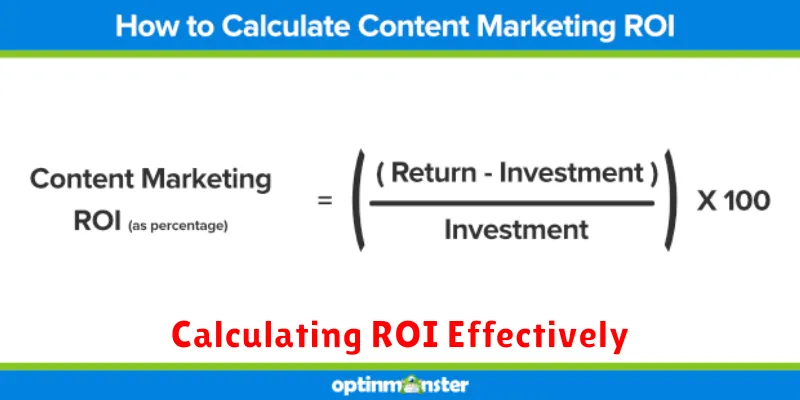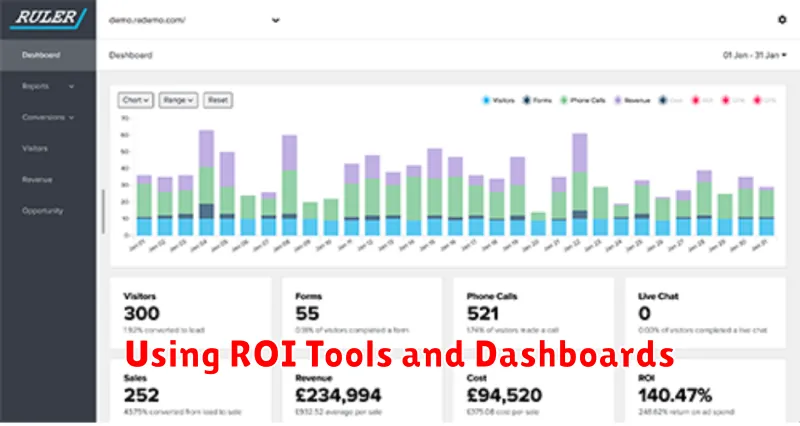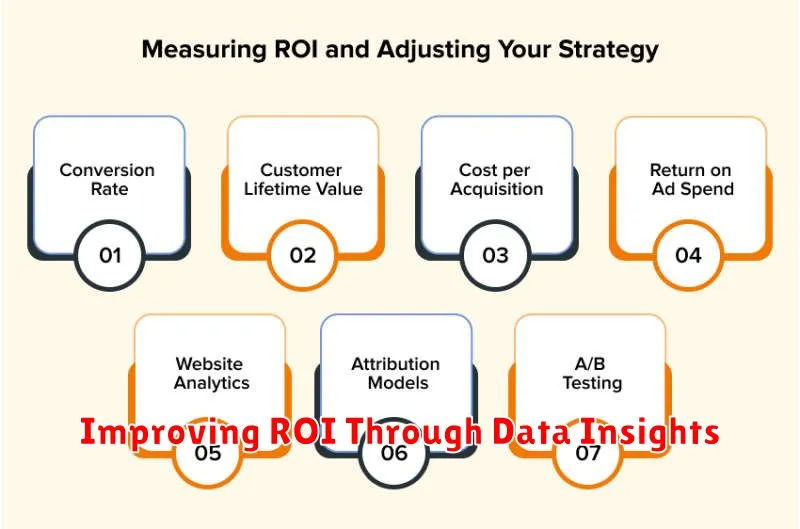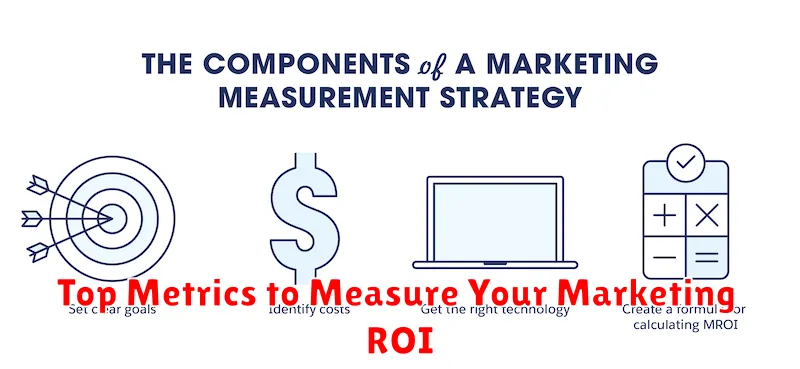Measuring the effectiveness of your marketing efforts is paramount to success. Calculating your marketing ROI (Return on Investment) allows you to understand which campaigns are generating revenue and which are falling short. By analyzing key metrics, you can optimize your strategies, allocate budget effectively, and ultimately, drive business growth. This article will delve into the top metrics you should be tracking to accurately measure your marketing ROI, providing actionable insights to refine your approach and maximize your returns. Understanding these metrics is essential for any business looking to achieve a positive ROI from their marketing investments.
Whether you’re focused on digital marketing, traditional methods, or a combination of both, measuring the right metrics is key to understanding the effectiveness of your campaigns. From website traffic and conversion rates to lead generation and customer lifetime value, there are specific metrics that provide crucial data for ROI calculations. This guide will explore these essential metrics, offering a comprehensive understanding of how to measure and interpret them to improve your marketing ROI. Learn how to leverage data-driven insights to make informed decisions and achieve a strong return on your marketing spend.
What is Marketing ROI?
Marketing ROI (Return on Investment) is a key metric that measures the profitability of your marketing campaigns. It demonstrates the return you gain from the money you invest in marketing activities.
Essentially, it helps you understand how effectively your marketing spend generates profit. Calculating marketing ROI allows you to justify marketing expenses and optimize resource allocation for future campaigns.
A positive ROI indicates that your marketing efforts are profitable, while a negative ROI suggests that your campaigns are losing money. Tracking and analyzing your marketing ROI is essential for making informed decisions and improving overall marketing performance.
Key Performance Indicators (KPIs)
Key Performance Indicators (KPIs) are quantifiable metrics used to evaluate the success of an organization, employee, or campaign in meeting strategic and operational goals. They provide a tangible way to measure progress and identify areas for improvement.
In marketing, KPIs are crucial for demonstrating the effectiveness and impact of various activities. They help justify marketing spend and guide future strategies. Choosing the right KPIs depends on the specific marketing objectives.
Some common marketing KPIs include:
- Website Traffic: Measures the number of visitors to a website.
- Conversion Rate: Tracks the percentage of visitors who complete a desired action (e.g., making a purchase, filling out a form).
- Customer Acquisition Cost (CAC): Calculates the cost of acquiring a new customer.
- Return on Investment (ROI): Measures the profitability of marketing campaigns.
By regularly monitoring and analyzing KPIs, businesses can gain valuable insights into their marketing performance and make data-driven decisions to optimize their strategies.
Calculating ROI Effectively

Calculating your marketing Return on Investment (ROI) is crucial for understanding the effectiveness of your campaigns. It allows you to justify marketing spend and optimize future strategies. A simple formula provides a solid starting point:
ROI = (Net Profit - Marketing Cost) / Marketing Cost
Net profit is the revenue generated directly from your marketing efforts minus any associated costs (excluding marketing costs). Marketing cost encompasses all expenses related to the specific campaign being measured.
For example, if a campaign generates $10,000 in net profit and costs $2,000 to run, the ROI is:
ROI = ($10,000 - $2,000) / $2,000 = 4 or 400%
This indicates that for every dollar spent on marketing, the business earned four dollars in profit.
Using ROI Tools and Dashboards

Leveraging the right tools and dashboards is crucial for effectively measuring and analyzing your marketing ROI. These resources provide the means to collect, organize, and visualize your data, enabling informed decision-making and strategic optimization.
Marketing analytics platforms offer comprehensive solutions for tracking campaigns across multiple channels. They often include features such as attribution modeling, which helps determine the impact of different touchpoints in the customer journey. Look for platforms that integrate with your existing marketing technologies to streamline data collection.
Custom dashboards are invaluable for visualizing key performance indicators (KPIs). By tailoring dashboards to your specific marketing objectives, you can gain a clear overview of campaign performance and identify areas for improvement. Focus on visualizing metrics directly related to revenue generation, such as conversion rates, customer lifetime value (CLTV), and return on ad spend (ROAS).
Selecting the right tools and establishing informative dashboards empowers marketers to move beyond vanity metrics and focus on the data that truly impacts the bottom line.
Improving ROI Through Data Insights

Leveraging data insights is crucial for optimizing marketing campaigns and maximizing ROI. By analyzing key metrics, businesses can identify what’s working, what’s not, and where adjustments are needed. This data-driven approach allows for more strategic decision-making, leading to more effective campaigns and a higher return on investment.
Data analysis helps identify trends and patterns in customer behavior, campaign performance, and market dynamics. Understanding these patterns can inform budget allocation, channel optimization, and content personalization. For example, if data reveals a specific demographic responds well to a particular channel, resources can be allocated to maximize that channel’s effectiveness.
Furthermore, data insights enable continuous improvement. By consistently monitoring and analyzing campaign performance, marketers can identify areas for optimization and make necessary adjustments in real-time. This iterative process ensures campaigns are constantly refined, maximizing their impact and driving ROI.

